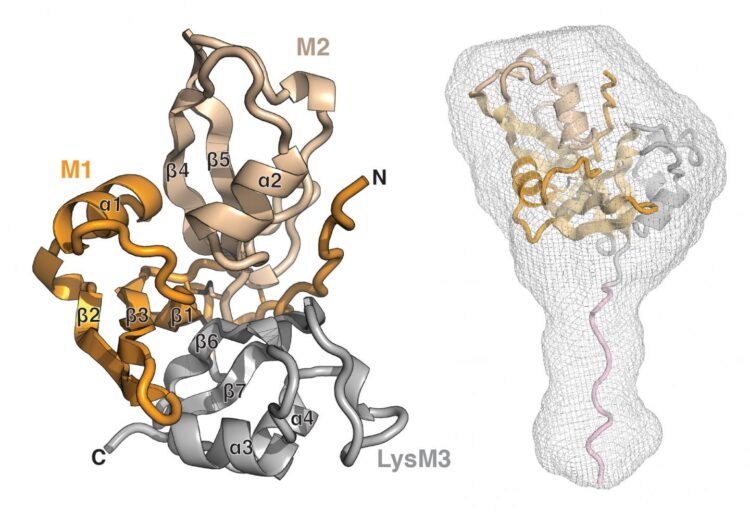
Credit: Kasper Røjkjær Andersen
Exopolysaccharides (EPS) are surface-exposed carbohydrates that surround and protect bacteria and are involved in biofilm formation, cell-to-cell interactions, immune evasion, and pathogenesis. The structures and compositions of EPS synthesized by different bacteria are highly diverse and therefore a molecular fingerprint.
EPS also plays an important role for bacterial colonization and symbiosis with plants. Nitrogen-fixing soil bacteria (rhizobia) are recognized on the basis of their EPS when colonizing plant roots, judged compatible or incompatible by their legume host and allowed or denied access accordingly. The single-pass transmembrane Exopolysaccharide receptor 3 (EPR3) is responsible for monitoring EPS.
“To gain a deeper understanding of the function of this receptor, we needed to know what it looks like”, says Jaslyn Wong, who conducted this research at Aarhus University. Unfortunately, attempts to determine the structure of the ligand-binding portion of EPR3 remained unsuccessful for years, but a breakthrough was finally achieved by using llama-derived nanobodies to obtain a crystal of the receptor.
The structure revealed that EPR3 stands out from other members of the so-called LysM receptor kinases. EPR3 deviates in its ligand-binding domain from the canonical members of this receptor family and has a fold that is unique and novel for carbohydrate binding proteins.
“This is a good example of how a structure changes our view on the biology”, says Kasper Røjkjær Andersen. “We are now able to demonstrate the existence of a completely new and structurally unique class of carbohydrate receptors and find that this class is conserved in the entire plant kingdom. We did not know this before we obtained the structure and this opens for a lot of exciting biology to understand the role of the receptor”.
Jaslyn Wong adds: “Research on EPS receptors is still in its infancy, and I am excited about how this knowledge could be used and its potential implications on shaping microbiota for more sustainable agriculture”.
###
DOI: 10.1038/s41467-020-17568-9
For further information, please contact
Assistant professor Kasper Røjkjær Andersen
Department of Molecular Biology and Genetics
Aarhus University, Denmark
[email protected]
Media Contact
Kasper Røjkjær Andersen
[email protected]
Original Source
https:/
Related Journal Article
http://dx.






